Stay the Course: Profile of Robert P. Lightner
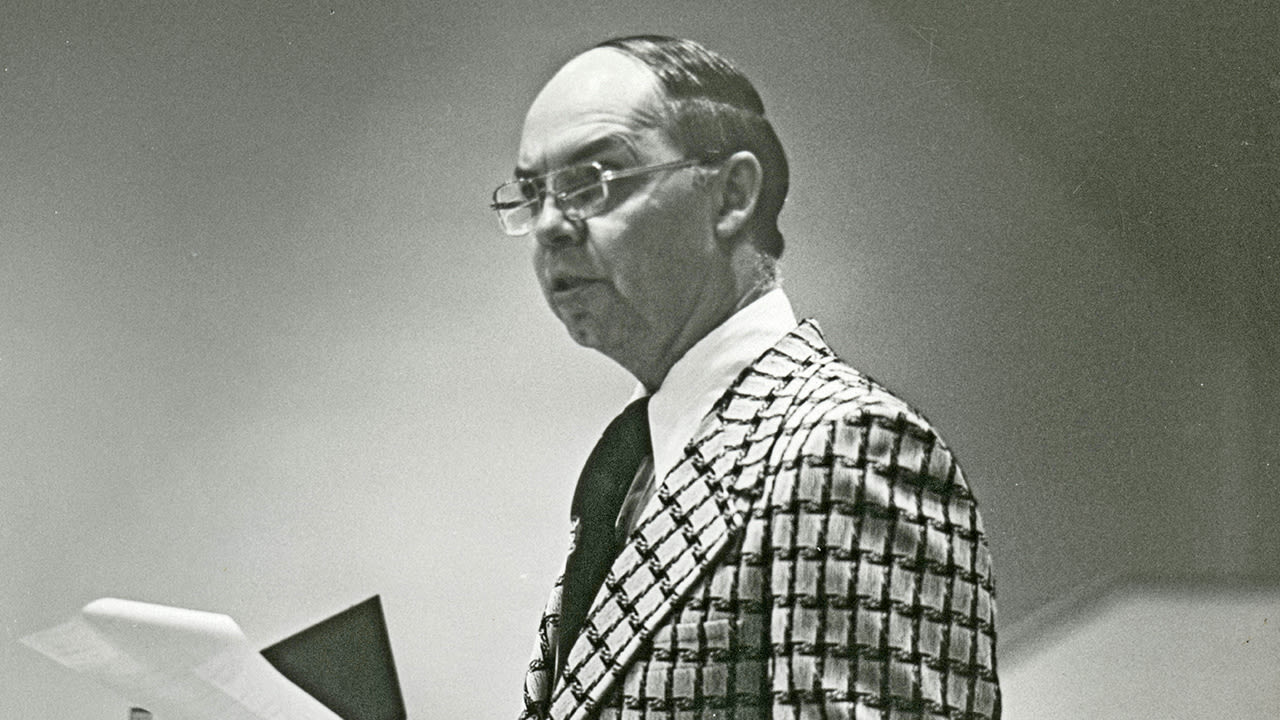
Robert P. Lightner (ThM, 1959; ThD, 1964) remembered nothing of the Piper Tri-Pacer plane crash that killed the pilot and grievously injured him after a preaching trip to Borger, Texas.
Another survivor had to tell him later how the trim tab malfunctioned and the student pilot panicked in choppy air. The plane crashed on its left side—Lightner’s side—and the young seminary professor suffered terrible head and face injuries. He was brought—choking on his own blood—to a little hospital near Amarillo where surgeons managed to open his airway and wire his jaw shut.
“My jaw was locked like that for a number of weeks,” Lightner recalled later in an interview, “and I had to drink nothing but liquids through a place where a tooth was out. Of course, I had just started to teach [at DTS], and it was tough.” The plane crash—on October 6, 1968—happened six weeks into Lightner’s first semester teaching systematic theology at Dallas Theological Seminary. Many would have understood if it was his last, but not Robert P. Lightner, affectionately nicknamed “Lightning Bob” by generations of students.
After several weeks in the hospital—with his jaw still wired shut—Lightner thought, “Oh, I can finish this semester.” But Dr. Walvoord (president of DTS at that time) would hear none of it. “No, no, no,” Dr. Walvoord said. “You are not going to do that.” But the plucky young professor’s perseverance paid off. He was allowed to speak in chapel that semester about God’s faithfulness to his family during and after the crash. For one thing, his wife, Pearl, was caring for two young daughters and an infant girl, and the Seminary insurance policy went into effect on October 1, just five days before the crash. “If we didn’t have that, I don’t know what would have happened,” recalled Lightner. “And the Seminary paid me for the full semester. Just wonderful treatment.”
By January, Lightner was back in the classroom trying to put theological cookies on the bottom shelf for his students to easily grasp. From that time until his death nearly fifty years later, Dr. Robert Lightner was a faithful, persevering teacher of God’s grace at DTS and in churches around the world. “Staying the course,” he called it, and it was a character trait that defined his life.
Early Life and Career
Lightner developed an early love for teaching. The one-room schoolhouse he attended near Lebanon, Pennsylvania, provided several examples of teachers who loved their students and communicated well.
It was in a tiny storefront church that Lightner first met Jesus. The church itself was semi-charismatic. “We were encouraged to come up to the altar and ‘pray through,’” Lightner recalled. “Which meant praying until you felt better, and then you were supposed to be saved. Of course, later I learned that it’s not what you do but what is given [by God] that saves you. At that time I knew I was a sinner, and I knew Christ died for me, and I knew I had to accept His payment for my sins.”
With his heart set afire by God, Lightner immediately became involved in ministry to soldiers at the nearby Indian Gap Army Base. He also joined the local Hi-BA, or High School Born-Againers Club. It was well that he did, because that’s how he met a lovely young woman named Pearl Hostetter. “She needed a ride,” Lightner remembered, “and I felt sorry for her, so I volunteered to go to her house, pick her up, and take her back home.” They fell in love and were married in 1952. 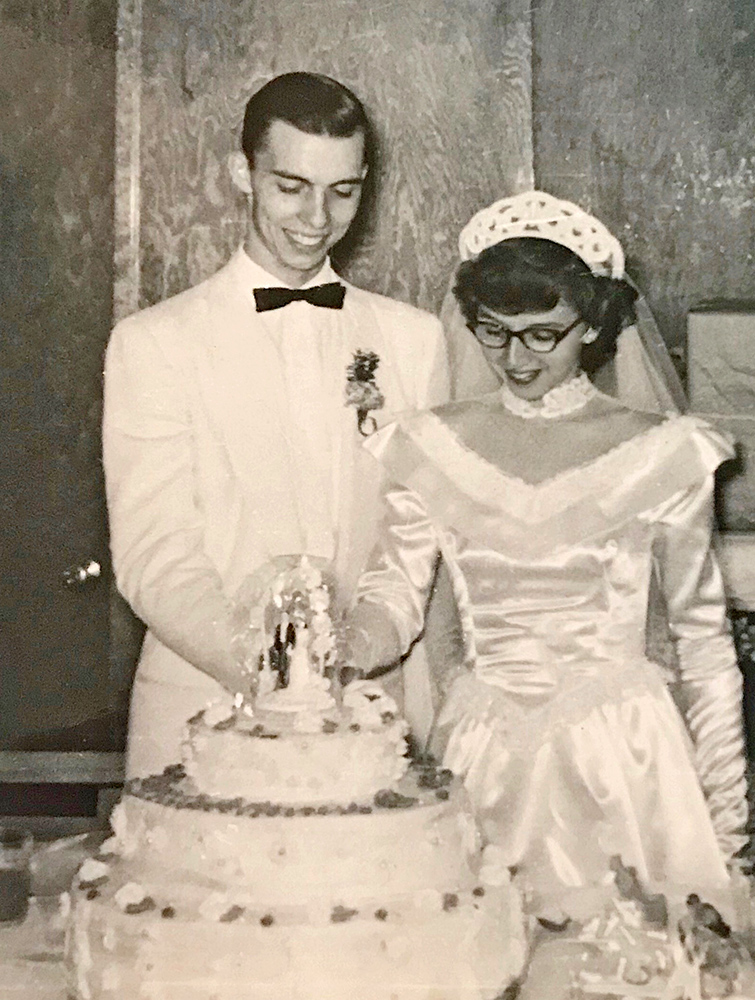
Lightner’s teaching gifts blossomed after he attended Baptist Bible Seminary in Johnson City, New York [the school later moved to Clarks Summit, Pennsylvania, where it was renamed Baptist Bible College and Seminary]. He and Pearl both attended the school, and during his college years, Lightner traveled with several gospel teams and a men’s quartet where he sang bass.
Dr. John R. Dunkin (ThM, 1945; ThD, 1950), dean of the Baptist Bible Seminary and a graduate of DTS, traveled with the group, and on one occasion he cornered Pearl and told her that her husband should go to DTS to get his master’s and stay right on through for his doctorate. After Pearl told Lightner, he went to Dunkin and said, “Dr. Dunkin, what else is there to know about theology?” Dunkin kindly passed it off and said, “Oh, well, you’ll learn a lot more.” And that’s how the Lightners ended up at DTS in 1955, towing their twenty-five-foot house trailer behind them through rush hour traffic to the West Commerce trailer village.
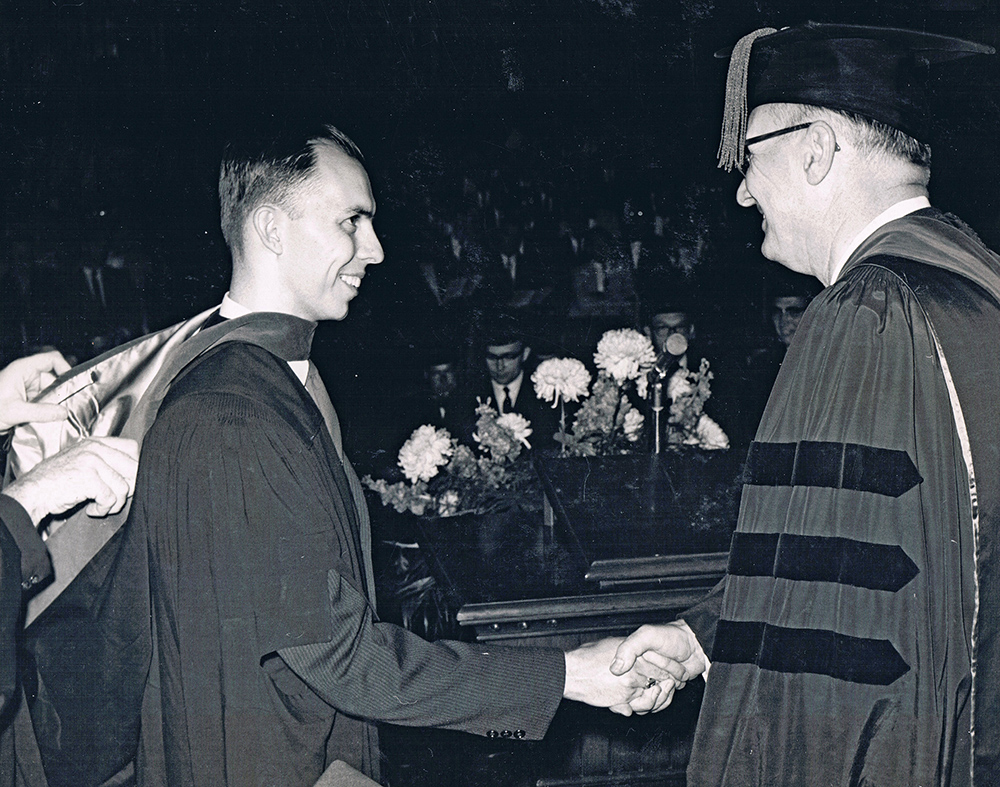 At DTS, Lightner was heavily influenced by clear teachers like S. Lewis Johnson (ThM, 1946; ThD, 1949), Charles Ryrie (ThM, 1947; ThD, 1949), Merrill F. Unger (ThM, 1943; ThD,1945), John F. Walvoord (ThM, 1934; ThD, 1936), and J. Dwight Pentecost (ThM, 1941; ThD, 1956). After graduation he returned to Baptist Bible Seminary to teach theology, but was invited back to DTS to teach in 1968 after completing his ThD. “Dr. Charles Ryrie gave my name to Dr. Walvoord,” recalled Lightner. “They needed somebody in the theology department, and he recommended that I come and be interviewed for the job. I was doubly flabbergasted at that.”
At DTS, Lightner was heavily influenced by clear teachers like S. Lewis Johnson (ThM, 1946; ThD, 1949), Charles Ryrie (ThM, 1947; ThD, 1949), Merrill F. Unger (ThM, 1943; ThD,1945), John F. Walvoord (ThM, 1934; ThD, 1936), and J. Dwight Pentecost (ThM, 1941; ThD, 1956). After graduation he returned to Baptist Bible Seminary to teach theology, but was invited back to DTS to teach in 1968 after completing his ThD. “Dr. Charles Ryrie gave my name to Dr. Walvoord,” recalled Lightner. “They needed somebody in the theology department, and he recommended that I come and be interviewed for the job. I was doubly flabbergasted at that.”
Teaching Truth, Loving Well
After surviving the horrific plane crash, Lightner took nothing for granted. He tried to make the most of every opportunity both inside and outside the classroom. A “theology of shoe leather” he called it, where living out the gospel was as much a part of his life as preparing for lectures or writing books and Bible studies. “He was a humble person,” recalled Pearl. “He reached out to ordinary people at diners and coffee shops and became their friends. One in particular needed transportation to doctors and the hospital, and Bob was his ‘caregiver’ for that until the man died.”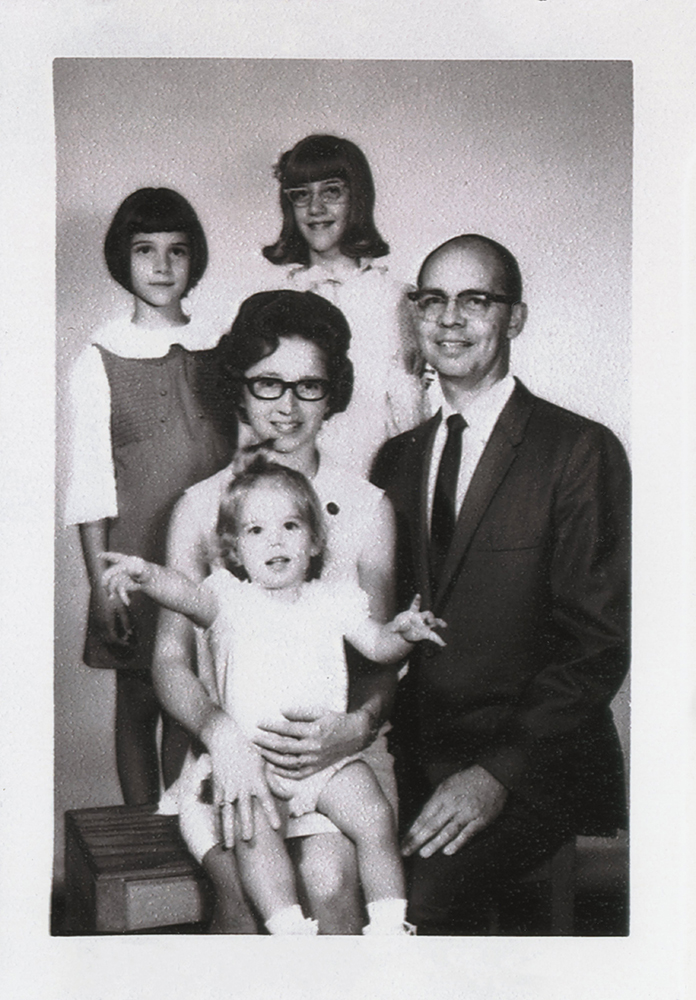
Lightner’s oldest daughter, Nancy Shotts, remembers that, “He was totally transparent and never felt that his position of author, faculty member, preacher, theologian, or any of the other titles that I was so proud of, made him any more special or ‘above’ anyone. I saw him build relationships with a homeless man in a coffee shop, a man who worked at Whataburger, and our next-door neighbors, whom he sacrificially served for years without any ‘glory’ or anyone even seeing his ministry. These ministries were every bit as important to him as the more ‘public’ ones, and they were, as he called it, ‘where the rubber meets the road’—this is where I saw him put his theology into practice and truly be the hands and feet of Jesus.”
In a remarkable series of events, Lightner was also called upon by the mother of convicted murderer George Lott to minister to her son while he was on death row in Huntsville, Texas. Lightner found the experience very difficult—he was one of only two witnesses at Lott’s death—but he faithfully ministered to Lott and his family, as well as to relatives of the two men Lott had killed. In the end, Lott came to faith in Christ.
Lightner also traveled often to speak at conferences, to serve as supply pastor, or to take on interim pastoral roles—thirty-three assignments at twenty-four different churches—where he had to balance teaching hard truth with exercising practical decorum. “Interim pastor,” Lightner recalled with a laugh in 2012. “That means their pastor left, and I came to salvage what was left, to try to bring the two different camps together. I helped to avoid splits and other problems.”
Sometimes Lightner brought Pearl or one of their three daughters along with him. Each of his daughters remembers those times as special occasions with their daddy. Pearl remembers that the whole family felt it was part of their ministry to support Lightner as he preached. “We never felt neglected by his being gone most weekends,” she said. “One year we kept track, and he had been home only a few Sundays that year. I considered it a privilege to be the wife of a servant of the Lord.”
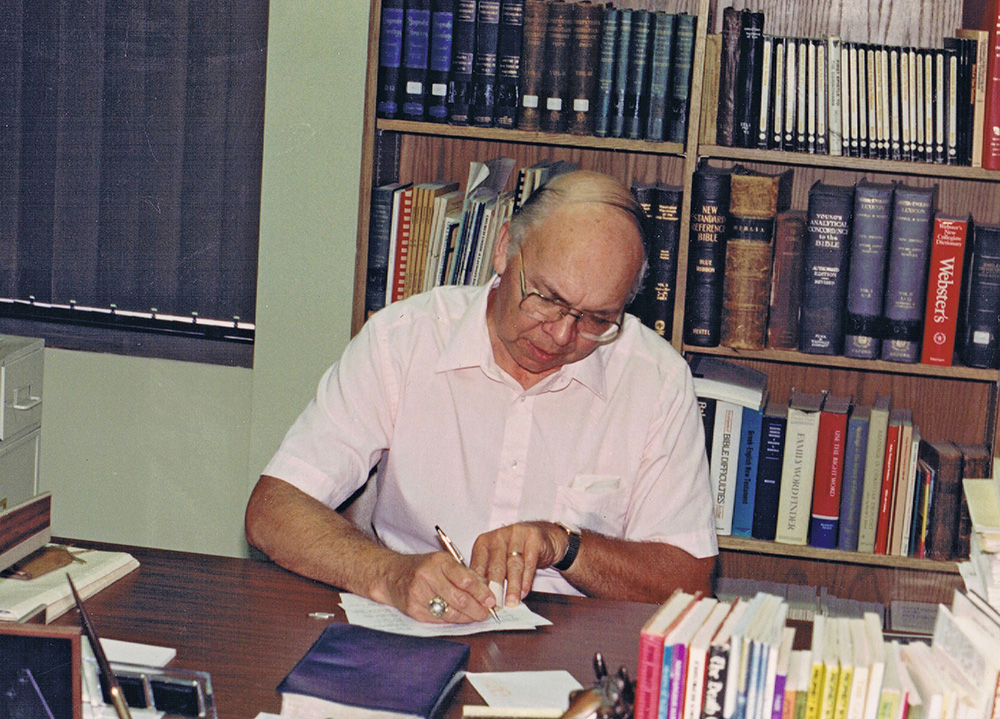 Lightner was also a prolific writer. Over the course of forty-seven years he published twenty-five books and numerous articles and studies, with a twenty-sixth book almost ready for publication at the time of his death. Pearl was an integral part of each of those books, painstakingly typing each long-hand manuscript. “She has just worked overtime in helping me,” Lightner said in an interview in 2012, “and I really, really appreciated that.”
Lightner was also a prolific writer. Over the course of forty-seven years he published twenty-five books and numerous articles and studies, with a twenty-sixth book almost ready for publication at the time of his death. Pearl was an integral part of each of those books, painstakingly typing each long-hand manuscript. “She has just worked overtime in helping me,” Lightner said in an interview in 2012, “and I really, really appreciated that.”
David Gunn, director of Regular Baptist Press, noted that Lightner’s writings “were influential in shaping Regular Baptist thought for decades.” Some of his most popular works were Angels, Satan, and Demons; The Death Christ Died; and Sin, the Savior, and Salvation. He was also a strong advocate for classical dispensationalism and thoroughly presented and defended that position in several of his books.
Lightner retired from full-time teaching at DTS in 1998, but he remained professor emeritus of systematic theology and an adjunct professor of theological studies until his death in 2018. “Dr. Lightner was a clear-thinking theologian,” noted DTS president Dr. Mark L. Bailey. “I knew him to be nothing less than faithful, principled, and a steady defender of biblical truth.” Dr. J. Lanier Burns—Lightner’s department chairman for twenty years—said of him: “He was a faithful, trustworthy professor who was willing and able to serve as needed. He loved the Lord and the hope of His soon return!”
“Servitude Was His Life”
While the world at large remembers Lightner as a distinguished author, faithful teacher, and diplomatic pastor, his family knows that his most devoted ministry was always to them.
His oldest daughter, Nancy, recalls, “I have always admired my dad’s integrity and authenticity. There was never a doubt in my mind that I could trust him completely—to be honest with me, to put his theology into practice no matter what the situation, to act on his principles when faced with challenges, and to follow through in keeping his word in both big and small things.”
Middle daughter Nadine said at his memorial service that her father always showed unconditional love. “He trained me in the ways of the Lord and His Word, giving me a firm foundation on which to build my life. He faithfully and tirelessly served me in whatever capacity was needed, constantly modeling Christ’s sacrificial love. While theology was his area of expertise and passion, servitude was his life.”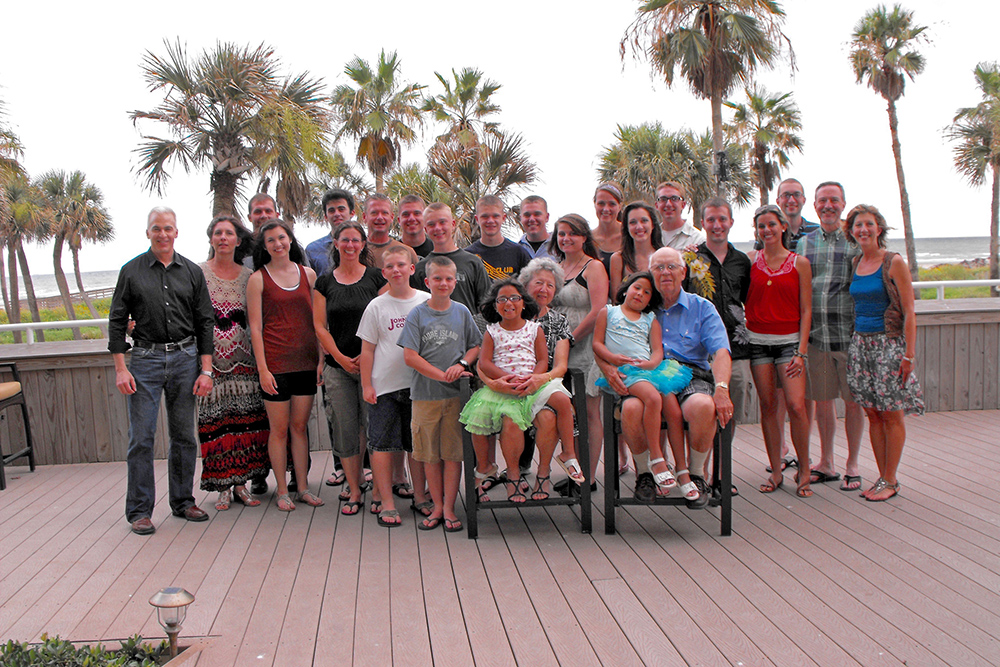
Youngest daughter Natalie recalled that her father constantly looked for ways to demonstrate God’s grace to her. As a teenager—while driving her father’s pickup truck—Natalie once rear-ended her father’s other pickup truck in the driveway. Dr. Lightner came around from the backyard and looked at the crumpled bumpers, then said simply, “Leesie [her nickname], what happened?” She remained speechless. He responded by saying, “Natalie, I think this is an opportunity to show you grace!” Then he explained that grace was undeserved favor and that God showed us grace by sending His Son to pay for our sins.
As a grandfather, Lightner doted on all fifteen grandchildren, making them each feel special and loved. In his retirement he cut lawns and collected cans and sent all the money to his grandchildren. He and Pearl put a chart of their grandkids’ names on their kitchen table so they could pray for each one twice per month.
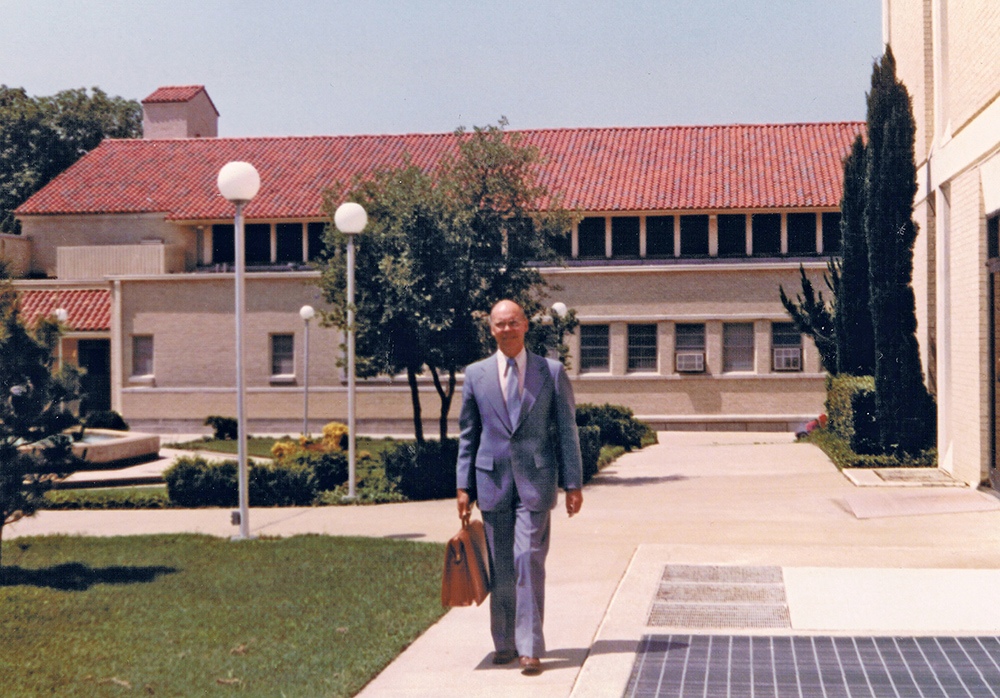
“Grandpa brought warmth wherever he went and had a complete love of life and love for his family,” recalled one grandchild. “He loved people with Christ’s love and demonstrated the existence of a good God to everyone around him. Our grandpa’s character has helped us to see that in the midst of our grief, this is a celebration.”
Dr. Robert P. Lightner went home to be with the Lord he loved so well on August 3, 2018, at the age of 87.
Well done, good and faithful servant. You stayed the course.
About the Contributors


